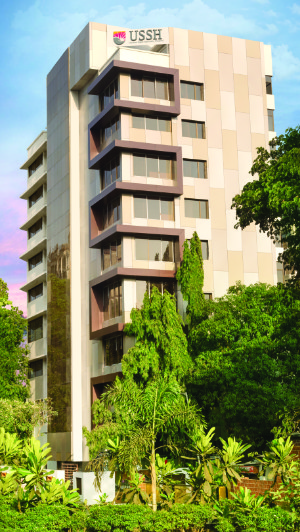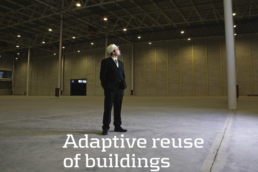The Best Way to Approach Healthcare Design for Greenfield Projects
Setting up a new hospital or health clinic is exciting! But starting with a blank slate can also be overwhelming if you don’t know where to start. That’s why greenfield hospital projects created from scratch require expert planning, design, and execution.
There’s no disputing that healthcare infrastructure investments are sound. Accounting for 80% of the Indian healthcare market, the hospital industry is growing by leaps and bounds. Healthcare industry growth is expected to reach $132 billion by 2023 at an annual rate of nearly 17%. The data shows the tremendous potential in increasing the number of hospital beds by at least 30% so that citizens in all parts of the country can receive access to good quality medical care.
A few trends in planning and building healthcare organizations have been described in our blog linked here.
If you are interested in developing new hospital building projects, a few tips from healthcare architecture design experts can help you get on the right path. This article is a concise guide covering the most critical aspects of medical design and construction.
Choose the ideal plot for a new hospital or healthcare centre.
Before you break ground on a greenfield hospital project, perhaps the most important thing to consider is – Location, Location, Location!
When evaluating your options, think about the following factors:
1. Accessibility
- Is the plot accessible by road?
- Is it close to public transportation?
- Can potential patients find it easily?
- Will they be able to arrive at the emergency room safely and conveniently in an emergency?
- Do you have the essential infrastructure plug ins like a reliable source of water required for construction purposes and a drainage system?
- Where do you get electricity connection from; distance of the electric sub-station from site?
2. Nature of the land
- Is it non-agricultural land that is specifically designated for hospitals or does it require a change of use?
- Have you done geo-tech survey to understand the topography & soil strata of plot?
- What is the shape of the plot? This can make a difference in design because it is easier to plan out a regular shaped plot than an irregularly shaped piece of land.
3. Permissions and Approvals
One of the most challenging obstacles in building new healthcare centres is obtaining timely approvals and paperwork from regulatory bodies. These include:
- Licenses for construction
- Approval of the land use
- Municipal taxes and deposits
- Business registration
- Accreditation following national standards like NABH, NABL, AERB
Owners or developers have to provide calculations & plans for the above permissions, which we support to map:
- The proposed built-up area of project
- Open spaces around the building
- Parking provisions as per regulations
Envision the entire structure before building a new hospital.
1. Mission Focused
Does your healthcare designer help you achieve your vision for the type of hospital or centre you would like to build? Some of the best hospital designs are rooted in concepts that envision the best healthcare delivery for their patients.
Human-centred design in healthcare involves:
- Building the infrastructure to support clinical workflows, making things easier for medical staff.
- Patient-centric practices focus on supporting the patient’s path through the healthcare centre while envisioning the relatives’ experience. This includes planning for waiting areas, parking lots, wayfinding methods, and child-friendly facilities. Read what our lead architect Kshititi Nagarkar says about patient-centric hospital design in our blog linked here.
- Flexible design ideas so that spaces can be re-purposed in the future.
- Sustainable hospital design considers ways to conserve energy and resources during construction and operations.
You can find out more about the essentials of healthcare design in our blog linked here.
Efficient and thoughtful hospital architecture design and planning can help lay the foundation for the type of healthcare organization you envision.
“At Shree Designs, Healthcare Architects, we strongly believe in the dictum ‘Form Follows Function. Accordingly, every project we work on is function-personified, mapped, and then aesthetically packaged,”.
Kshititi Nagarkar, Principal Architect at Shree Designs
2. Safety and Security
- Have you considered fire safety planning as per NBC fire code CED – 46 with requisite emergency exits and fire protection systems?
- Do you have a plan for disposal systems to eliminate biomedical waste or sewage treatment plants?
- Which areas need to be covered using closed-circuit cameras, keeping patient privacy intact while monitoring the premise?
3. Infrastructure and Services
- While the key care giving zones are primarily planned, Staff zones and Support areas are key to provide a seamless patient experience.
- Civil work, including RCC, masonry, doors, windows, healthcare specific interior, and façade treatment, ensures the best materials are used.
- Isolation rooms are the need of the hour in a post-pandemic world. Our blog, linked here, describes the essentials of building an isolation area within your ICU.
- Planning of operation theatres according to safety and regulatory standards.
- Air conditioning and HVAC systems maintain the indoor air quality as per ISHRAE guidelines.
- Mapping of Medical equipment in each diagnostic and therapeutic department.
- Universal power supply and medical gas supply to ensure smooth functioning of critical areas like ICU’s, OTs etc
Shree Designs executed a comprehensive greenfield hospital project in a prime location in Mumbai, Maharashtra. The Upasani Super Speciality Hospital (USSH) is a 60 bedded multi-specialty hospital providing clinical and surgical services specializing in orthopaedics, gynaecology, cardiology, neurology, and diagnostics.
Compartmentalizing the facility’s operations during the designing process was a key consideration. The design ensured that most public movements would be restricted to the ground and first floors for simple medical needs and consultations. The departments that handle critical procedures and specialties would be restricted to the mid-levels while the patient rooms were taken on the top most floors to help give a better view to these recuperating spaces.
Innovations in design achieved a perfect balance between the spaces’ aesthetics and functionality. The use of modern materials furthered this balance. The Room-in-Room OT was one of the main highlights. Movable glass panels in the OT were used to separate the operating zone from rest of the OT, this along with HEPA filtered air supply ensured a high level of sterility to the patient undergoing joint replacements. High hygiene standards are achieved by installing calculated air circulation & ventilation systems, adequate sanitation facilities, and through the use of anti-bacterial materials wherever required.
From the OT complex to the in-patient rooms and diagnostic areas, we created healthcare designs that adhered to all the requisite norms defined by the National Accreditation Board for Hospitals & Healthcare Providers (NABH) and that USSH hospital has achieved ( check their website – we will know which level) We are glad we could help our clients achieve their vision through a successful ideation, effective collaboration, and meticulous implementation.
In Conclusion
While this is not a comprehensive list, the points discussed above will give you an idea of the various things you should consider when building a greenfield hospital.
Setting up a new healthcare centre, hospital, and clinic can be extremely rewarding – personally and professionally. But if you are overwhelmed with the sheer number of things to take care of, don’t worry! You are not alone.
Many of our clients come to us for help navigating the complexities of healthcare design, and we are happy to help you on your journey. Shree Designs has been instrumental in constructing and designing many greenfield healthcare projects.
Get in touch with us to know more!
Related Posts
Successful Brownfield Healthcare Projects
Facility upgrades in hospital design and construction are inevitable, whether it is to accommodate…
Repurpose and Resuscitate!
Over the last few years, healthcare organisations have demonstrated a tendency to protect and…
Adaptive Reuse of Buildings
Malls are going through a downturn as there is a decrease in the number of people spending hours in…
Retrofitting For Healthcare Facilities
The word “retrofit” as we are aware suggests fitting in or on to an existing structure OR to…




